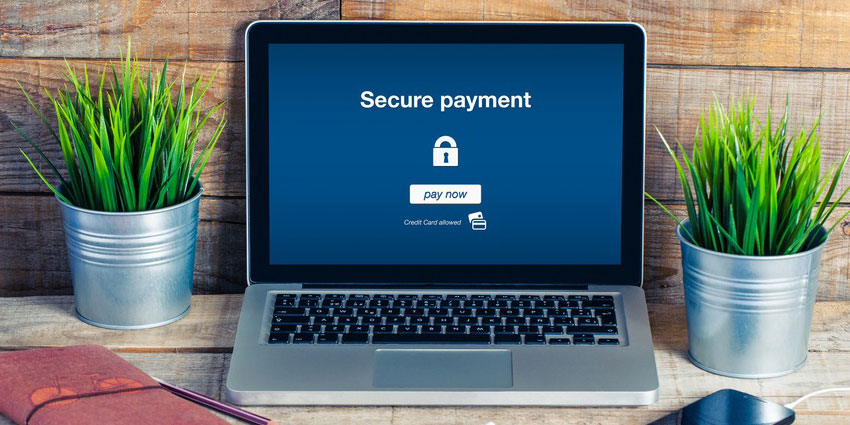Many different payment options are available to buyers today, which is great. But each option has its own level of risks, and you need to do your research before choosing the right card for you.
Security is a constant concern nowadays, especially where finances are concerned. With the proliferation of eCommerce and online payment systems and gateways, it’s important that we maintain security in our transactions. This article will go through things you need to know about making online payments secure as a merchant, with topics ranging from making users feel safe on your site/in your app and staying compliant with regulations.
Why Security Matters In Online Payments
Online payment security is a huge concern for merchants because they often deal with customers’ sensitive data. Every transaction that takes place on their site or app is basically a direct transfer of funds from the customer to the business owner. Merchants need to ensure that their customers’ funds are protected in every way possible, which includes having the right technologies and handling sensitive data correctly.
In addition, security keeps your customers happy (and they will be less likely to leave negative feedback), which means you can build customer loyalty that lasts over time – something that a business cannot afford to lose when they are just starting.
For example, Solidgate.com, among other things, provides a unique antifraud engine that works with all types of online businesses. It helps companies and retailers who receive online payments to achieve full compliance with all applicable rules and regulations, prevent chargebacks, etc.
How To Make Online Payments Secure As A Merchant?
There are many different factors that play into online payment security as a merchant. The following is a list of things you should know about.
Make Users Feel Safe On Your Site/In Your App
Make your customers feel safe when they use your site or app by detecting and blocking any attacks that might occur. You can achieve this by utilizing a WAF (Web Application Firewall), an application-layer firewall typically deployed between the web server and the Internet to filter out malicious traffic before it reaches the server. It works by inspecting user requests, blocking illegal requests from accessing the website, and allowing only legitimate ones to pass through.
Another important thing to keep in mind is that users can take their business elsewhere if they’re not feeling safe using your site or buying through your app. Hopefully, this is something you’ve considered and will make sure to include in any new development work you do. It’s important that users feel safe while on your site, whether they’re shopping or not. That is why SSL/TLS should be used. But even if you are using SSL, it doesn’t stop attackers from viewing information from other open ports on the same computer.
Encrypt Data
When you have sensitive data (such as credit card numbers) that are currently sitting on your database, you need to encrypt them using 128-bit encryption so that nobody else can access them. Every received credit card is stored in a Protected Application Programming Interface (or API) layer, which will contain the credit card number. To make sure no malicious code can get into your database, there is always some form of encryption protecting your data.
Manage PCI Compliance
As a merchant, you need to make sure that your merchant services provider is PCI compliant. This is something you need to look into – ask your provider if they are compliant and ask exactly what they’re doing to keep your information secure. If there’s an issue with PCI compliance, it could cause big problems for you and your business online.
Use 3D Secure Gateways
If you’re selling to customers overseas, especially in Europe, you need to accommodate them by using 3-D Secure gateways on your site. This is 3-D Secure authentication that Visa and MasterCard require as a way for online shoppers to add a layer of security to their online purchases. It stands for ‘three-dimensional secure’ and is also referred to as Verified by Visa or MasterCard SecureCode.
Enable An Address Verification System (AVS)
Address Verification System (AVS) is an extra security measure that asks customers how they want their billing address verified when they make a purchase. When using a secure gateway, this will happen automatically, but if you’re using a non-secure gateway, it’s extra important that you enable AVS because this is the security check the secure gateway uses.
Request The CVV
CVV is usually the last security measure in place with online sales and transactions. But it really needs to be right up there with AVS. It stands for Card Verification Value which is displayed on the back of your card and is typically a 3-digit number. It helps to reduce fraud, including identity theft and card-not-present fraud.
Monitor Fraud Continuously
Fraud is the biggest threat to online merchants, and it’s often something that goes under the radar. If you’re not aware of it, it could happen to you and your customers. You should keep a close eye on your fraud monitoring system all the time in order to prevent fraud attacks, protection against attempts at fishing, and also protect your reputation online. Corporate fraud prevention solutions can help you manage risks and prevent fraud before it occurs.
The Bottom Line
There are many different things to consider when operating a secure online business. The biggest issue is making your users feel safe when they make a purchase, but you can’t stop the bad guys from trying to steal your clients’ information and money by hacking into your system. You need to make sure that you’re doing everything possible to keep everyone’s data safe.

